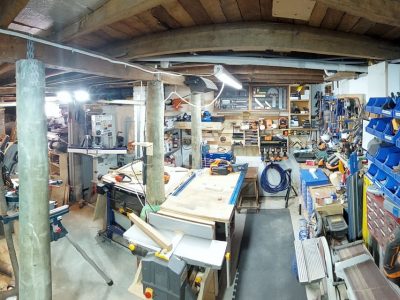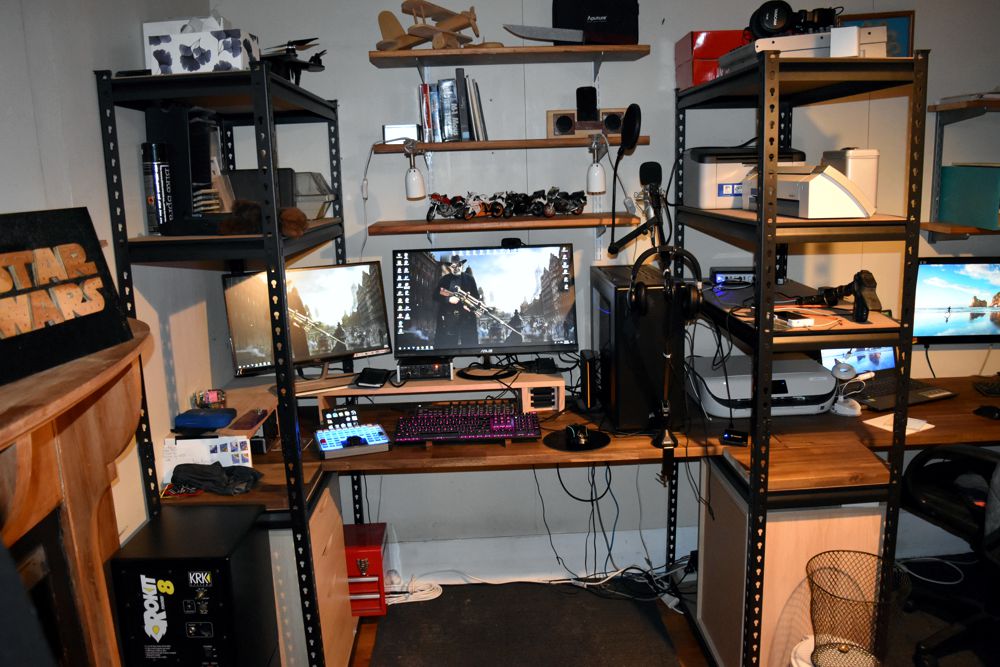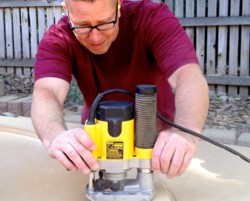 Todd A, Clippinger at the American Craftsman Workshop has been inspiration to many over the years through his craft of woodworking. He has been making sawdust since 1997 as a remodeling contractor and now is designing and making fine furniture from his workshop and has been featured in various woodworking magazines.
Todd A, Clippinger at the American Craftsman Workshop has been inspiration to many over the years through his craft of woodworking. He has been making sawdust since 1997 as a remodeling contractor and now is designing and making fine furniture from his workshop and has been featured in various woodworking magazines.
Todd also loves to share his knowledge with tips and tricks as well as a few interviews on his youtube channel and website which are both popular, his motto “Share the Love-Share the Knowledge.” it kind of says it all doesn’t it.
Interview
Intro
Todd started out as a remodeling contractor and has become a juried woodworking artist based on his competitive designs and craftsmanship. Today he will share with us his journey, what inspires him, and how he came to begin sharing his knowledge with the online woodworking community.
Stats: Pro woodworker
Shop size: 924 square feet with 10′ ceiling
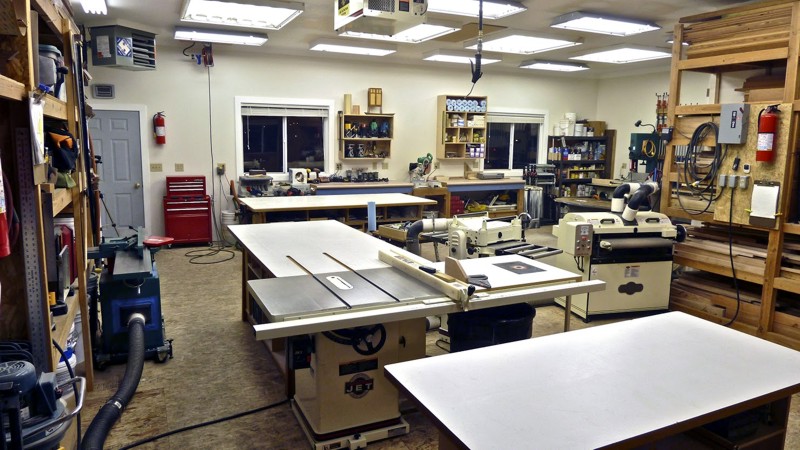
How long have you been woodworking?
My woodworking came about because I started working as a remodeling contractor in ’97. There are a lot of custom items that I need built as part of my projects for clients, so woodworking is a natural extension of what I do as a remodeling contractor.
As a contractor, I started out having other shops build the things I needed and I just did the installation. But whenever I met with the shops to give them a design or pick the projects up, I was always very fascinated and a bit jealous of what they were doing. I finally hit a point where I started buying enough shop tools to do what the custom mill work and cabinet shops were doing for me.
I slowly started building my own designs for remodel projects in 2002 and was going full tilt on them by 2004. By 2007 I had built enough projects that I actually became a juried woodworking artist when I submitted my portfolio to the Western Design Conference, and was accepted by the panel of judges. There were over 3500 applicants from all over the nation for 100 spots at the show, only a handful of those were for woodworking and I was juried in.
Can you remember your first project and what it was?
It was kind of a funny thing, I was a remodeling contractor installing cabinets and running trim, but I found it so exciting to build a very simple, tall, skinny bookcase to fit in the space between the upright piano my wife had and the wall. It was one thing to install trim and cabinets, no matter how nice they were, and it was another thing to build a free-standing piece of furniture.
We still have that book shelf and I was so proud of it when I built it. After a while I was really ashamed of it because of how bad the work was. The stain is blotchy, the finish is not very good, nor are the details and design. But, over time, I gained a renewed appreciation of it because it represented how far I have come in my skills.
This really is a lesson for everyone out there: every piece you build is a benchmark of what you knew and were capable of at the time you built it. So don’t ever be embarrassed of your work. Every piece represents the skills you had at the time you built it, as well as the the lessons learned and skills developed that took you to the next level.
Now when I look at my work, I can see the progression and maturation in my vision for design and skills. My portfolio is a record of how I have grown as an artist and craftsman and I am not embarrassed of any of my work because each piece was the best that I could do at that time.
I think I will need to cover this topic in a video!
What made you decide to start producing online content? (blog or video)
I was building a lot of custom work for a Frank Lloyd Wright inspired house I built with my brother in Ohio. My wife was still at our home in Billings, MT which is 1800 miles away, so I had evenings free and I started getting involved with the woodworking community at LumberJocks.

I started sharing the projects I was building and answering questions of how things were built. I found this immensely gratifying, as I found that it inspired a lot of others to build things and the information helped others get over the technical challenges they were facing in their projects.
Also, much to my surprise, I found that by sharing I sparked renewed growth in my own knowledge. It is one thing to be able to do the work, but it challenged what I thought I knew when I had to break that knowledge down and share it in an effective and comprehensive manner with others.
Since then I have also gone on to be published in WOOD Magazine a handful of times and I get offers to produce content pretty regularly for various sites and publications, not all of them just about woodworking. It is difficult for me to meet the deadlines attached to the offers so I have had to turn down pretty much everything this year. I have my hands full with client’s projects and can’t take on publishing deadlines.
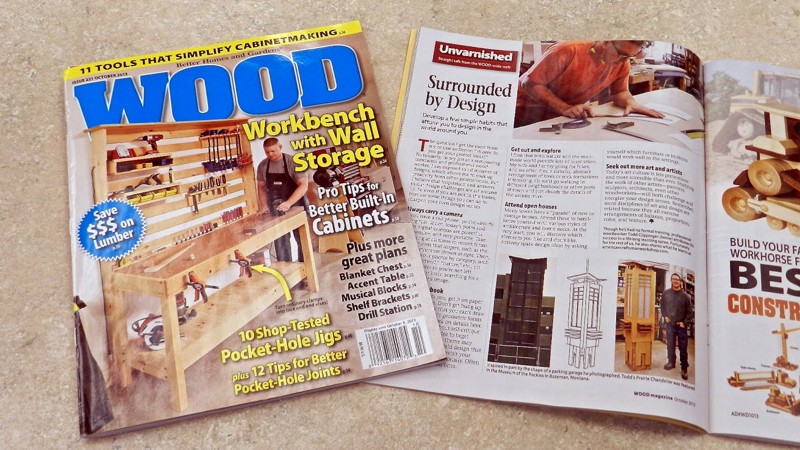
What was your first video project?
The first video I produced was on how I sharpen a card scraper. It was shot on a standard def camcorder. I did not even have a high def camera at that time.
There is a lot of technical information out there on how to sharpen a card scraper and I had been doing it for years with just a file and getting amazing results. I had tried sharing this in the blog and on forums but I was always being shot down as it was not believable or considered a legitimate technique for effectively sharpening a card scraper. I realized the only way to prove that my method worked, was to produce a video showing the shavings I could get with my sharpening method, that is how I came to shoot my first video.
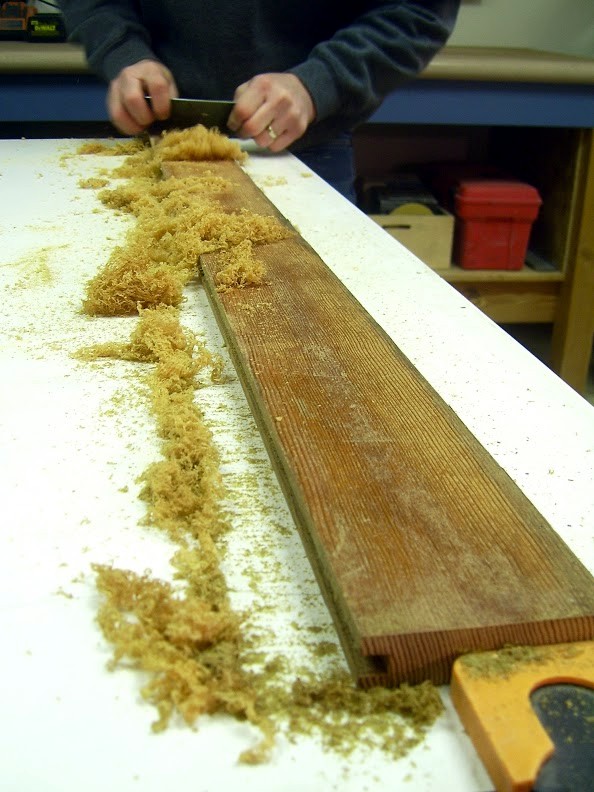
Right after shooting the card scraper video, I went out and purchased 2 HD camcorders so I could shoot a wide and tight shot simultaneously. I knew from the first video I definitely wanted to do more.
I still sharpen my card scrapers with the exact same method and use it on all of my high-end work. I think I will have to produce another video showing the method again since I have now upgraded to the Canon EOS 70D. It shoots some pretty sweet looking video and the topic is still a very popular one.
Do you only do woodworking or do you work with any other materials?
Since my roots are in the contracting world, I am accustomed to working a variety of materials besides solid wood. I had a great private conversation with Garry Knox Bennett a few years ago, he advised me to start adding metal in my work, and so I did. A great example of the first time I added metal into my work was the Torii Gate Stairwell Barrier. I had a local shop in Ohio make the metal frames to my specs.
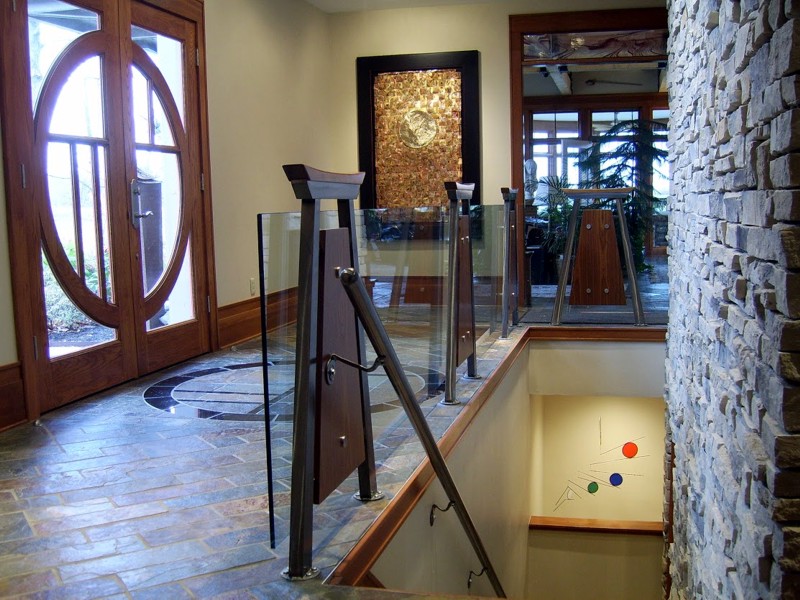
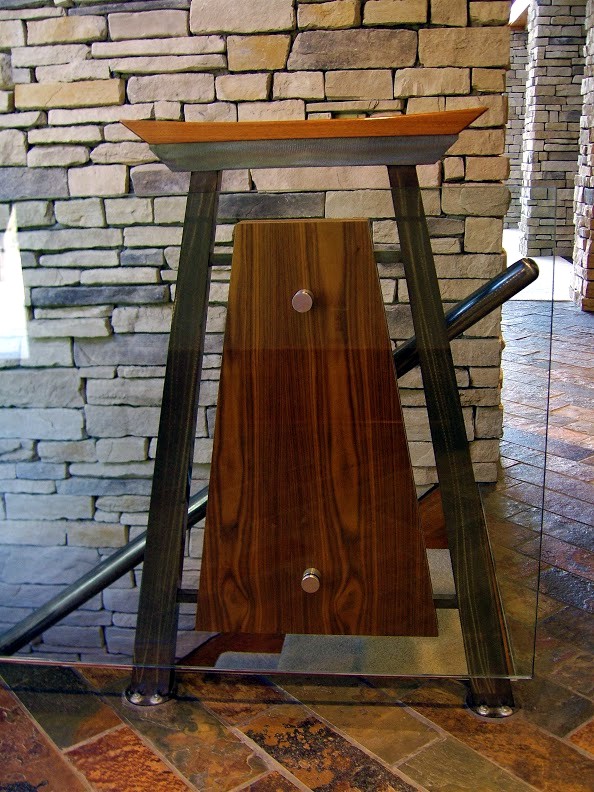
I have other shops do my metal work and welding, but I do the design. I am always under the gun for meeting deadlines and I have not had the time to devote to buying the equipment and learning to weld for myself. But I feel that the work is still mine since I do the designs, and I am proud to include other craftsmen in my projects. I am always sure to give credit to those that support me with their work. This has led to some great relationships that have brought me more work.
There are also many ways to include metal in your projects and not have to do any welding at all. I did an abstract design for an entry closet that included using 1/2″ copper rod for the handles. I did not have to do any welding on that one and I made my own bending jig for the curved pieces. But I did take the pieces in to a shop to have them threaded so I could properly attach them to the doors.
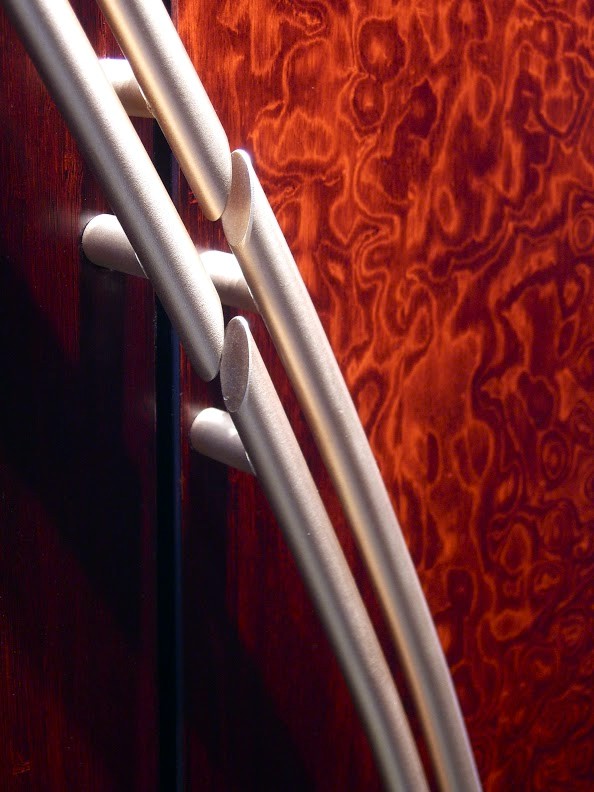
What is your favorite project you have made so far?
My Prairie Chandeliers have to be my favorite. I made a pair of chandeliers for the Cooper House, the Frank Lloyd Wright inspired house I mentioned earlier. I made one again for a fine woodworking exhibition at the Museum of the Rockies in Bozeman, Montana.
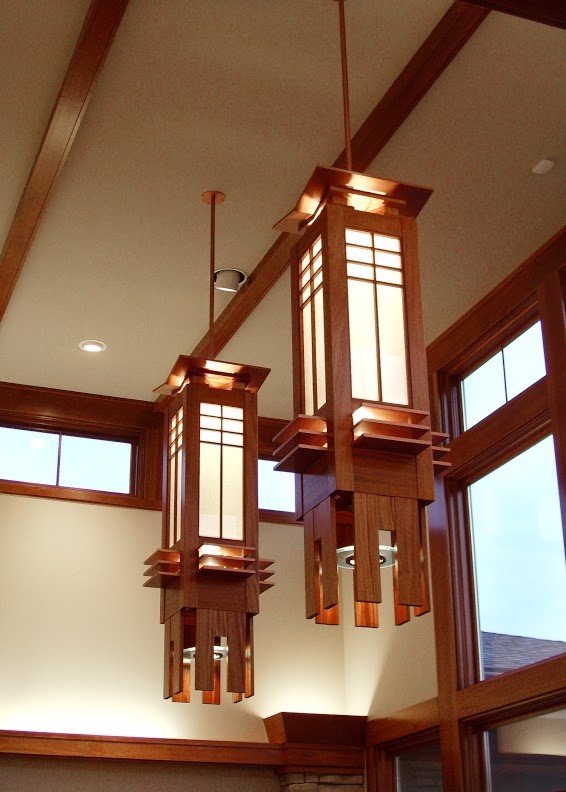
The curator of the museum was looking for woodworking craftsmen to exhibit and my name came up from 2 different people. He looked me up on the internet and found my site with the gallery page pretty easily. He was most impressed with the chandelier and called to invite me to show right away, but his request was that I specifically make the chandelier for the exhibit. At first, I thought his phone call was a joke, as I had not applied to show in any exhibitions.
The original chandeliers were made of ribbon mahogany. It is actually African Mahogany but it is called ribbon mahogany because of the strong lineal pattern in the wood. The one that I made for the museum exhibition was constructed of vertical grain douglas fir because I had originally envisioned capitalizing on the strong lineal pattern in it to accentuate the long vertical design of the chandeliers. I also love the deep color the douglas fir turns over time.
For the museum exhibition, the chandelier displayed over a stunning dining room set constructed by Tim Carney. I was especially honored, not only to show my chandelier, but to have it so perfectly matched with the dining set that Tim had made.
Tim Carney website: http://timothyswoodworking.com
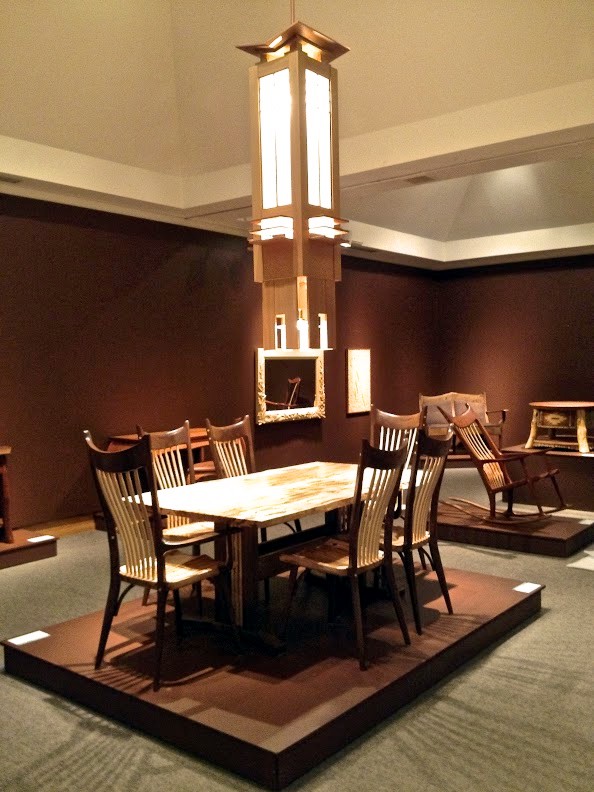
Do you have a favorite tool, if so what is it?
My favorite tool has to be my library of books. I just love all of the knowledge that books contain. I did not have a computer for the early years of my woodworking education, it was through books and magazines that I gained my core knowledge.
My library also represents my woodworking journey as the first purchases were on how-to and project books. Then I started buying books on furniture design and the history of furniture. I came to realize that furniture is mini architecture and they are closely related in their design principles, so I have also collected several books on architecture as well. But, if the woodworkers are looking for a tool in the shop that is my favorite, it has to be the humble card scraper!
Where do you get your inspiration from?
Since I am always building for clients, my first cues for design are taken from the clients themselves and the architectural style of their homes.
As I am building a project, my mind often starts spinning off variations of the design. So within one design, there are often many variations that spark new designs.
I also know a lot of artists that work in a wide variety of mediums, so I am surrounded by a lot of creative people. It is amazing what having a relationship with other artists will do for your vision of your own craft.
Other free-wheeling ideas are often inspired by pretty much anything. I might be driving through town and see the lines and shadows on a building in a particular manner and that triggers an idea. The form for my prairie chandelier was first inspired by the contemporary prairie style of the Cooper House that I had built. But while I was driving around at a mall in Cleveland, Ohio I saw the stairwell tower to a parking garage and that cemented the basic form in my mind. If you take the stairwell tower and replace the window pattern with a shoji screen pattern, that is the chandelier!
I made a video on designing that very accurately covers how I think and see things.
What advice would you give someone that may want to start making things?
The best thing to do is simply start building and making things right away!
Spend more time making and less time reading. There is a lot of information floating around on the internet and in magazines, some of it is good and a lot of it is just plain bad. Even the magazines publish a lot of information that caters to the romance of woodworking but not to the practicality of it. But the point here is that you will learn more by going out and doing than you will sifting through all of the information.
I have witnessed a lot of people getting hung up on all of the information and not going out to the shop to build and see what actually works. If a person starts building, all of the information will start to gel for them and they will start to filter out all of the crap. Until a person builds, they can’t see what actually works and what doesn’t. That is called experience.
If you are not building, then you are also not establishing a neurological path from your head to your hands which creates muscle memory and makes the actions second nature. That is also what we call experience. So if you are not building projects, you are not building any experience!
One idea begets another. So if you are not building, then you are less likely to be brainstorming.
Don’t be afraid to fail. It will happen, but you will learn a lot from the failures. I make my living at this and I risk a lot more with a failure, as a hobbyist there is actually very little to lose.
So the lesson is get out and BUILD!
Wacky Wood Works would like to thank Todd from the American Craftsman Workshop for his time for doing this interview. We hope it will inspire others to just get out to their shop and make something.
Regards
Nighthawk
All photo’s on this page are the property of Todd Clippinger at the American Craftsman Workshop. Wacky Wood Works has written permission to use them exclusively for this interview.

